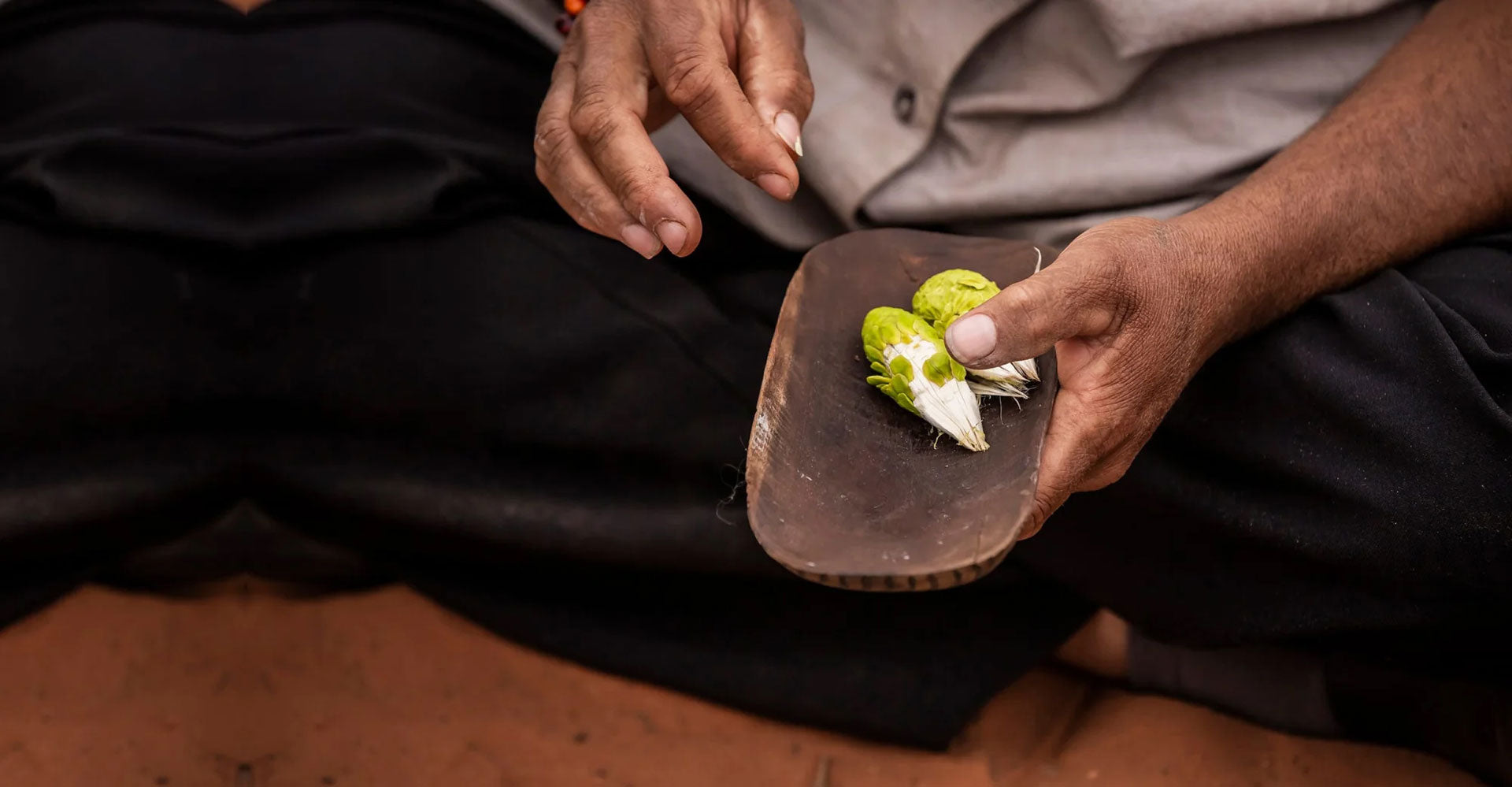
The Rising Trend of Australian Bushfood Globally
Exploring the world of bushfood
For many food enthusiasts out there, Australian bushfood is still an uncharted territory. The unfamiliarity with ingredients such as Lemon Myrtle, wattle seed or finger lime might even make some hesitant to try it out. However, if you haven't tried the distinctive tastes and varied ingredients of bushfood, then you're missing out on a truly amazing culinary journey. Today's blog post is going to take you on a culinary journey into the flavour filled world of Australian bush tucker, with a big focus on Australian botanicals such as Lemon Myrtle.
Table of Contents:
The Rising Trend of Bush Tucker in Global Cuisine

There's a growing trend capturing the attention of chefs worldwide: Australian native foods.
These ingredients, once largely unknown outside Australia, are now being incorporated into high-end global cuisine with exciting results.
Lemon Myrtle and Anise Myrtle - The Flavor Enhancers
Australian flora like anise myrtle and lemon myrtle offer unique flavors that can't be replicated by any other ingredient.
Chefs have started using these to elevate their dishes beyond traditional flavor profiles.
Riberry - A Taste Sensation from Down Under
Riberry, another gem from the country's native plants is making waves for its tart yet sweet taste profile.
These versatile berries have been used in everything from desserts to savory sauces, proving just how adaptable these indigenous ingredients can be when applied creatively within various cuisines.
Innovative Creations Using Indigenous Ingredients
We're seeing a revolution where chefs aren't simply adding native Australian ingredients began; they're building entire menus around them.
Next up we'll explore more about this emerging food industry and some notable figures leading the charge.
Indigenous Foods - An Emerging Ingredient in the bush food Industry

The food industry is experiencing a shift, with native Australian ingredients becoming an increasingly popular choice.
Adelaide Scottish-born chef Jock Zonfrillo, for instance, was a much loved chef reknown for overlaying native ingredients into his dishes.
Creating Unique Flavours With Australian plant ingredients
Zonfrillo's approach took unique elements like wok-tossed warragal greens and grilled king prawns, combined with other Australian natives to create innovative flavours that have never been tasted before.
This method of incorporating indigenous foods not only brings new tastes but also helps in preserving the country's rich culinary heritage.
Nutritional Benefits
More than just flavour enhancers; they offer significant nutritional benefits too. Lemon Myrtle, for example, is nutrient-rich and can enhance any meal's health quotient while adding a distinct taste profile. Research suggests that lemon myrtle infact contains even more antioxidants than a single serving of blueberries.
These findings underscore how integrating bush food into our diets can contribute positively towards overall well-being.
Innovative Use of Indigenous Ingredients In High-End Cuisine
Australian chefs aren't alone in their quest to experiment with local produce; renowned global establishments are following suit as well.
Pioneering this trend in the bush food industry was Attica's Ben Shewy who purchases ingredients directly from indigenous suppliers leading to creations such as green ant gravlax which showcases Australia's diverse flora on international platforms.
This rise signifies an exciting time for manufacturers and distributors looking at diversifying product offerings or seeking out fresh ingredient sources within the rapidly evolving industry.
Elevating Meals and Beverages

The incorporation of bush foods into meals and beverages is a rising trend in the food industry.
Native Australian ingredients began making their mark globally, not just in savory dishes, but also sweet treats and cocktails.
From Fine Dining to Casual Fare
Fine dining establishments have been pioneers in introducing native ingredients like lemon myrtle, bumpy red bush apple, wok-tossed warrigal greens, grilled king prawns with bunya nut cream cheese to global palates.
Chefs at places such as Botanic House are creating innovative recipes that highlight these unique flavors while respecting their cultural significance.
-
A dish featuring saltbush served alongside fattier red meats can be found on many menus across high-end restaurants.
-
Lemon Myrtle has become a popular ingredient for its citrusy flavor profile which pairs well with both seafoods like green ant gravlax or desserts alike.
-
Innovative chefs use freeze-dried finger limes as garnish adding pops of tartness enhancing the overall experience of savoring a meal or drink.
Opportunities in the Industry for certain Australian Native Products
One significant hurdle is price variability due to supply inconsistencies and seasonal fluctuations. Lemon myrtle is a bush fod ingredient that does not have this issue as it is available all year round, and when purchased from a supplier such as Australian Native products, you can expect consistent high quality, which makes it a great choice when choosing an Australian Botanical food ingredient.
Leveraging Nutritional Benefits Of Native Foods For Market Differentiation
The nutritional benefits offered by native foods present an opportunity for differentiation. Research has indicated a growing consumer interest towards health-oriented foods - making nutrient-rich offerings like lemon myrtle creations more appealing than ever before.
Incorporation Into Diverse Dining Experiences
An exciting trend is how diverse dining experiences now feature native plants - elevating everything from fine dining at places similar to Botanic House location right down casual fare establishments. This opens up new avenues for chefs worldwide looking forward taste rare ingredients.
As we delve deeper into the world of Australian delicacies, and explore other elements like its role in industries beyond food manufacturing (think fragrances), it becomes clear how versatile they truly are. So what does the future hold for bush foods? Let's find out next.
Future Prospects

The rising popularity of bush foods globally presents an exciting future.
Australian native ingredients, once overlooked, are now sought after by chefs and food manufacturers worldwide.
Cultural Significance and Sustainability - A Balancing Act
Maintaining the cultural significance of these unique flavors is paramount as they gain international recognition.
This history adds a depth to their use in modern cuisine that's hard to replicate with other ingredients.
Sustainability also plays a key role in future prospects. Lemon Myrtle is one Australian Native ingredient where every part of the plant can be used to turn into a natural product. Even the stems can be used to replenish the soil and start the growth cycle all over.
Growth Opportunities within The Industry
-
Innovative uses: Chefs like Attica's Ben Shewy continue pushing boundaries using native Australian ingredients such as lemon myrtle, wok-tossed warrigal greens or green ant gravlax in new ways.
-
New markets: With global consumers increasingly interested in trying novel tastes; there is potential growth across various sectors including beverages (think gin infused with botanicals), fragrances inspired by aromatic natives like saltbush or personal care products harnessing nutritional benefits of bushfoods.
FAQs in Relation to Bushfood
What are the nutritional benefits?
Australian bush foods are packed with nutrients. For instance, finger limes are rich in Vitamin C and antioxidants, while bunya nuts provide a good source of protein and carbohydrates. Lemon Myrtle is packed with antioxidants and is full of health benefits such as anti inflammatory and anti bacterial properites.
What is meant by bush food?
Bush food refers to native Australian ingredients that have been used for thousands of years by indigenous communities for their unique flavors and health benefits.
What is the most popular bush tucker?
Until recent times, the macadamia nut was the most well-known Australian bush tucker globally due to its delicious taste and versatile use in both sweet and savory dishes. Lemon Myrtle is now quickly taking centre stage.
Conclusion
Unveiling the wonders of bushfood and our country's native plants is quite a journey. Today we've delved into its global culinary impact and marveled at how it's transforming food scenes worldwide. The nutritional benefits are mind-blowing! And let's not forget those ingenious chefs who are crafting masterpieces with these indigenous ingredients. Bushfood is more than just an ingredient; it's a cultural heritage that's getting its well-deserved spotlight on the world stage.
Bush foods offer a world opportunities for growth and innovation in the burgeoning culinary sector. A future where sustainable farming practices meet gastronomic delights? That's something we can all anticipate with enthusiasm!
For more information, send us an email, to find out how Lemon Myrtle can take your product to the next level.
Stay in the know by clicking here.


